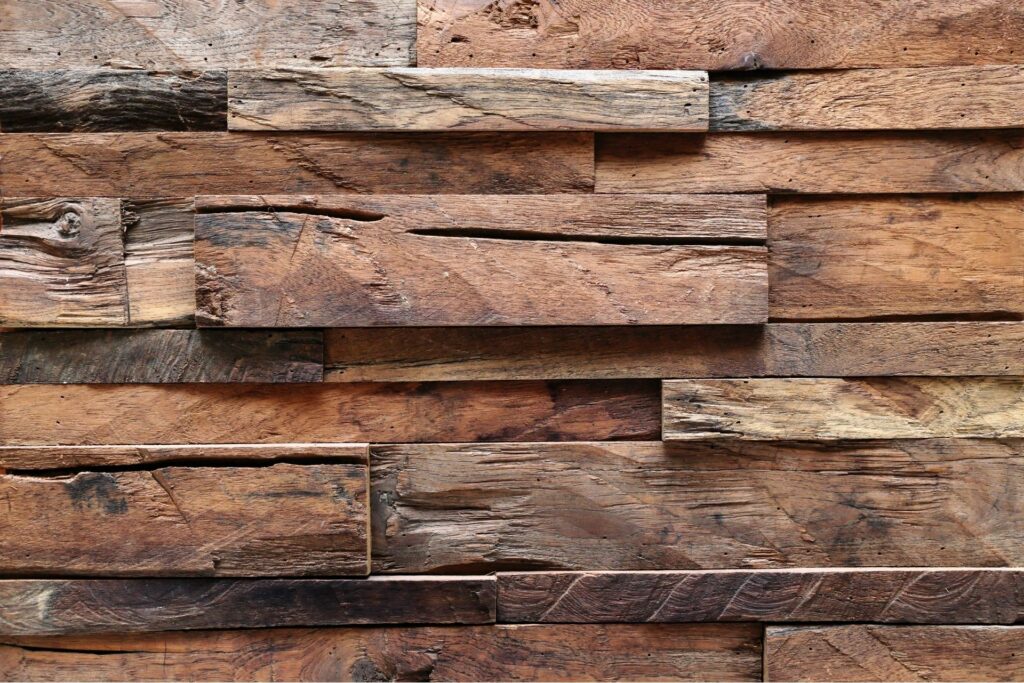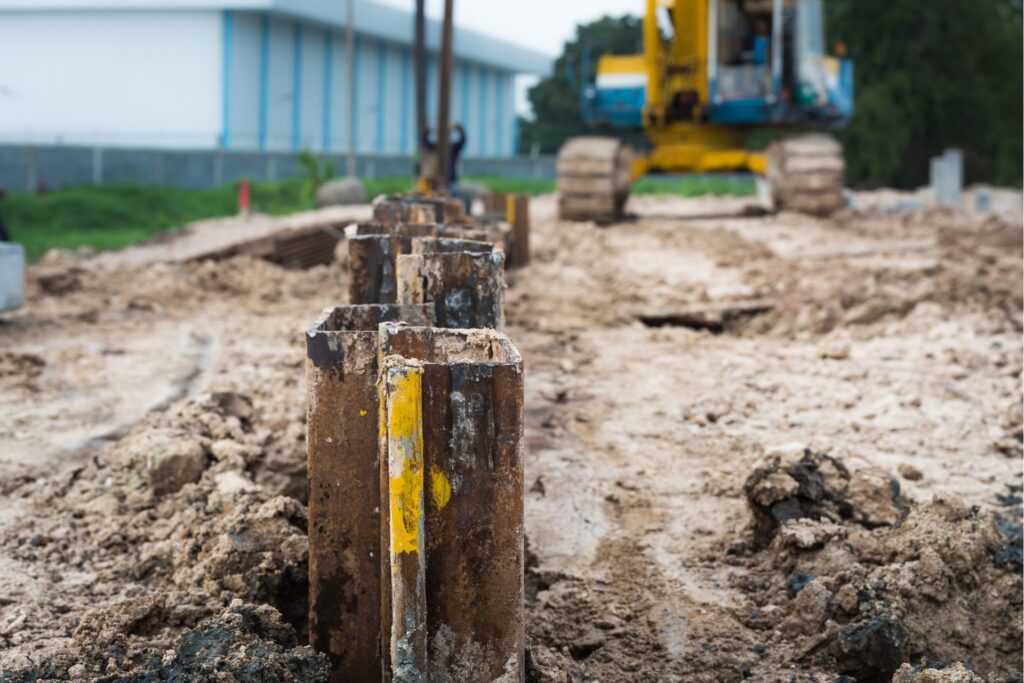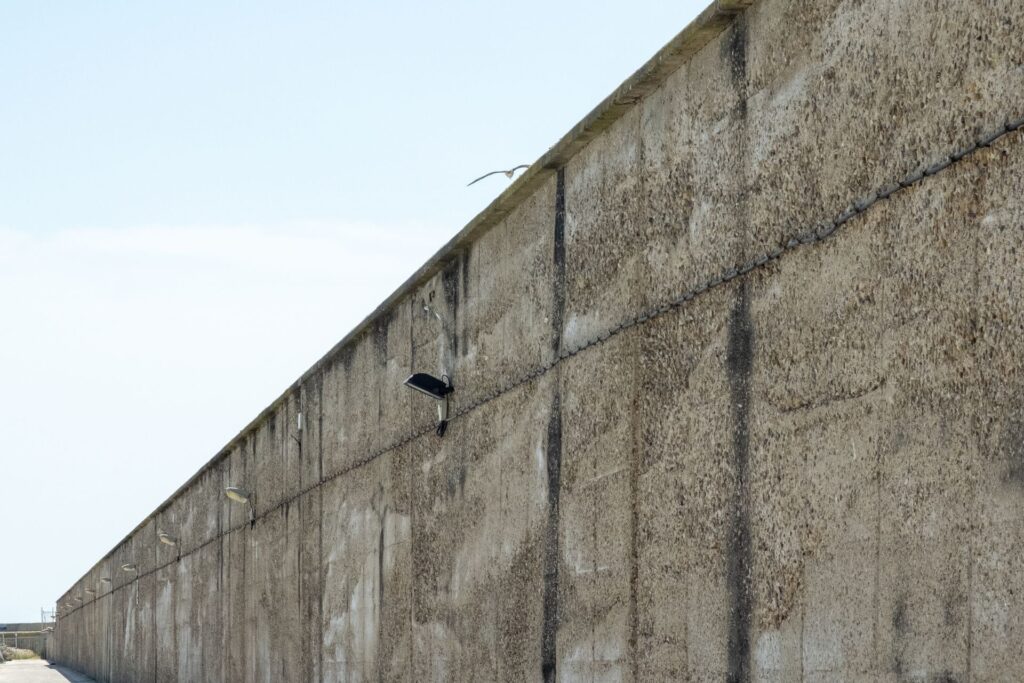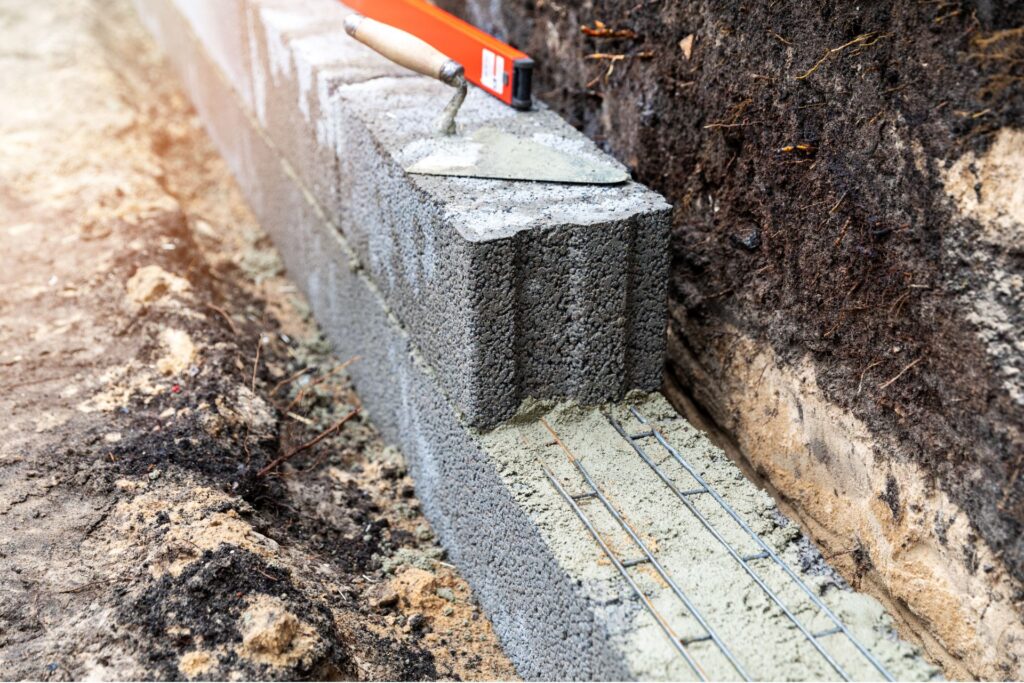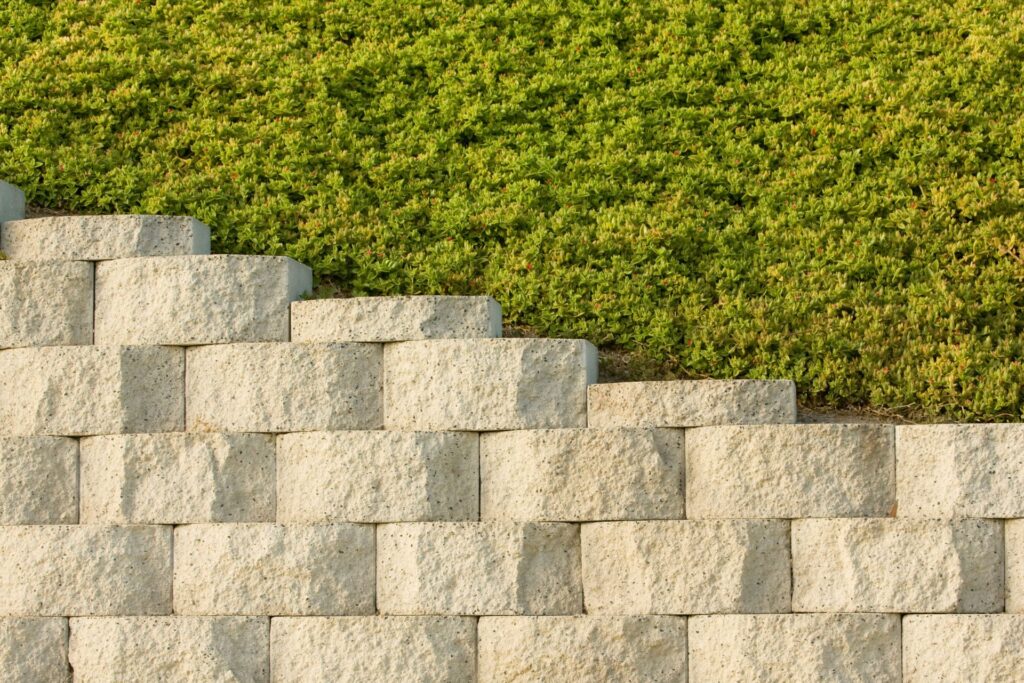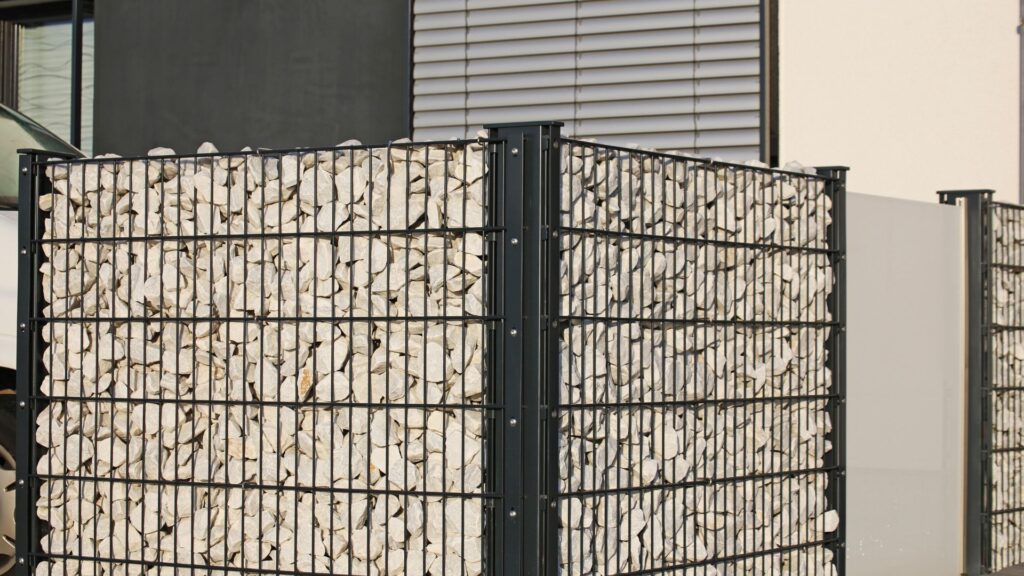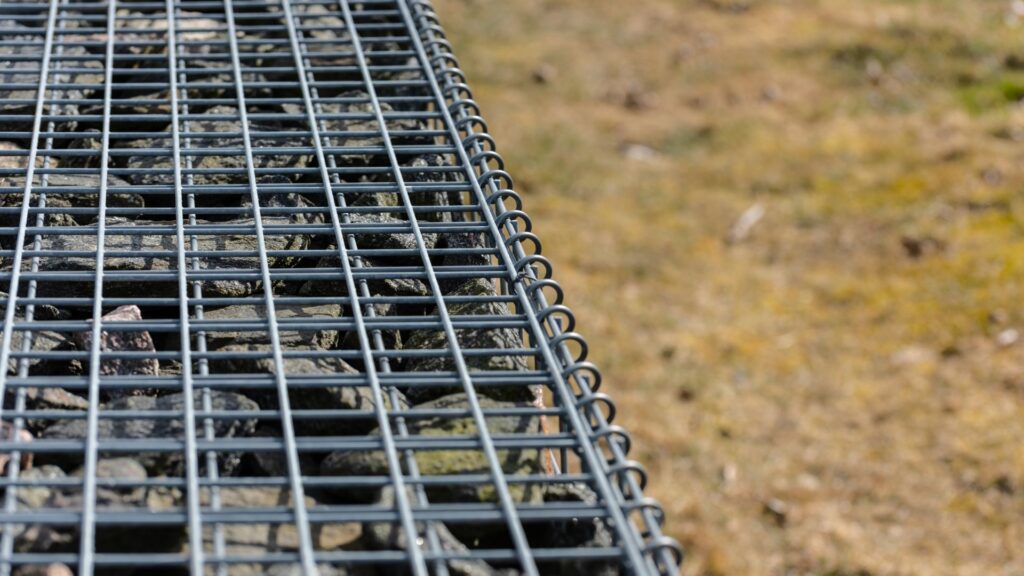Welcome to this essential guide for anyone in New Zealand considering the installation of a timber retaining wall in their outdoor space. Timber retaining walls are not only a practical solution for managing soil erosion and creating level areas within sloping landscapes, but they also offer a natural aesthetic that complements the scenic beauty of our country. With New Zealand’s unique climate and terrain, choosing the right design, materials, and construction methods for your timber retaining wall is crucial to ensure its longevity and effectiveness.
This comprehensive guide will navigate through the nuances of timber retaining walls from understanding their purpose and advantages to diving deep into the planning and design principles tailored for New Zealand conditions. Whether you’re a homeowner looking to enhance your garden’s functionality and appeal or a professional landscaper seeking in-depth knowledge on sustainable and durable design options, this article is designed to equip you with the insights you need. So, let’s embark on this journey together, exploring the world of timber retaining walls in NZ, ensuring your next landscaping project not only meets your aesthetic and functional needs but also stands the test of time against the elements.
When designing a timber retaining wall in New Zealand, it’s essential to consider the country’s unique climate and terrain to ensure durability and effectiveness. Timber walls are favored for their natural look, flexibility, and environmental sustainability. Key considerations include selecting durable, locally appropriate timber, understanding local building regulations, and integrating effective drainage systems to manage water runoff. A well-planned timber retaining wall not only prevents soil erosion and creates usable outdoor space but also enhances the natural beauty of New Zealand landscapes. For a successful project, prioritize quality materials, proper construction techniques, and regular maintenance.
- Understanding Timber Retaining Walls
- Planning Your Timber Retaining Wall
- Design Principles For Timber Retaining Walls
- Step-By-Step Guide To Building A Timber Retaining Wall
- Maintenance And Care
- Inspirational Ideas And Examples
- FAQs: About Timber Retaining Wall Design In NZ
- Conclusion
- Find A Professional Retaining Wall Designer Near You!
Understanding Timber Retaining Walls
Timber retaining walls are an essential component in landscape design, offering both functional and aesthetic benefits to garden spaces. These structures are specifically engineered to hold or retain soil, playing a crucial role in preventing soil erosion, managing sloped areas effectively, and enhancing the usability of garden spaces. By creating terraces or level areas, timber retaining walls provide the opportunity for more intricate landscape designs, allowing for the cultivation of gardens, installation of patios, or even the creation of seating areas. The incorporation of these walls transforms uneven, sloped areas into valuable, usable spaces, enriching the overall landscape design.
Why Choose Timber for Your Retaining Walls?
Timber stands out as a material of choice for retaining walls for several reasons, particularly in New Zealand (NZ), where the connection to nature and the environment plays a significant role in landscape design choices. Below are the key advantages of using timber over other materials for your retaining wall needs:
Natural Aesthetics: Timber provides a warm, natural look that seamlessly integrates with the outdoor environment, creating a cohesive and inviting garden space. Unlike concrete or metal, timber ages gracefully, acquiring a patina that adds character and depth to the garden’s overall aesthetic.
Design Flexibility: The versatility of timber allows for creative and flexible design options. Whether you’re aiming for a contemporary look with clean lines or a more rustic, natural feel, timber can be cut and finished to meet various design requirements. This flexibility enables the creation of unique, personalized retaining walls that reflect individual style and complement the surrounding landscape.
Environmental Considerations: In New Zealand, where environmental sustainability is a growing concern, timber is a particularly appealing choice. Timber is a renewable resource, and when sourced responsibly, it has a lower carbon footprint compared to other retaining wall materials like concrete or steel. Furthermore, timber retaining walls contribute to a garden’s ecosystem by providing habitats for various forms of wildlife, enhancing biodiversity.
Timber retaining walls offer a perfect blend of functionality and aesthetics, making them an ideal choice for managing slopes and preventing soil erosion while enhancing the beauty of your garden. Their natural appearance, coupled with design flexibility and environmental benefits, makes them a preferred choice in New Zealand’s landscapes. Whether you’re a professional landscaper or a gardening enthusiast, considering timber for your retaining wall projects can add value and character to your outdoor space.
When planning your next garden project, remember the advantages of timber retaining walls. Not only will you be choosing a solution that’s effective and beautiful, but you’ll also be making an environmentally conscious decision that aligns with New Zealand’s commitment to sustainability.

Planning Your Timber Retaining Wall
Creating a timber retaining wall in New Zealand is an excellent way to manage slopes, prevent erosion, and enhance the aesthetic appeal of your landscape. However, to ensure the success and longevity of your project, careful planning is essential. In this comprehensive guide, we’ll walk you through the essential steps of planning your timber retaining wall, focusing on assessing your needs and site conditions, understanding the legal requirements, and choosing the right timber for New Zealand’s unique climate.
Assessing Your Needs and Site Conditions
Before diving into the construction of a timber retaining wall, it’s crucial to evaluate your landscape thoroughly. New Zealand’s diverse terrain and weather conditions demand a careful assessment to ensure your retaining wall meets your needs and withstand the test of time.
Evaluating the Landscape: Start by surveying the area where you plan to build the wall. Consider the slope, existing vegetation, and the overall purpose of the wall. Is it for aesthetic appeal, functional support, or both? Understanding the landscape’s dynamics will help you design a wall that complements your outdoor space effectively.
Soil Type: Soil composition greatly influences the design and construction of your retaining wall. Sandy soils, clay, and loam each have different drainage and weight-bearing properties. Conduct a soil test to determine your site’s specific conditions. In areas with heavy rainfall, for instance, well-draining soil is crucial to prevent water buildup behind the wall, which could lead to pressure and eventual failure.
Drainage Conditions: Proper drainage is the backbone of a durable retaining wall. Assess the natural drainage patterns of your site and plan for adequate drainage solutions behind the wall to avoid water-related issues. Incorporating drainage pipes or weep holes can be effective strategy, especially in New Zealand’s wetter regions.
Legal Requirements and Permissions in NZ
Building a timber retaining wall in New Zealand isn’t just about construction; it’s also about compliance. Here’s what you need to know:
Building Consents: Depending on the height and location of your retaining wall, you may need to obtain building consent from your local council. Generally, walls over 1.5 meters high require consent, but this can vary by region.
Local Regulations: Familiarize yourself with the specific building codes and environmental regulations in your area. This includes setbacks from boundaries, requirements for structures near slopes, and any specific guidelines for retaining walls. Ensuring compliance from the start can save you from potential legal and financial headaches down the line.
Choosing the Right Timber
The choice of timber is critical in the construction of a retaining wall, especially in New Zealand’s variable climate. Here’s how to select the best option for your project:
Durability and Sustainability: Opt for timber that can withstand the elements and resist decay. Treated pine is a popular choice due to its durability and resistance to rot and pests. For those seeking more eco-friendly options, consider native hardwoods like Totara or Puriri, which are naturally resistant to decay and pests without the need for chemical treatment.
Climate Considerations: New Zealand’s climate varies from the subtropical north to the temperate south, so choose timber that suits your local weather conditions. In coastal areas, look for timber with high salt resistance, while in wetter regions, opt for wood with excellent moisture resistance.
By carefully assessing your needs and site conditions, understanding and complying with local legal requirements, and choosing the right timber, you can ensure the success and durability of your timber retaining wall. Not only will this add beauty and functionality to your landscape, but it will also provide the satisfaction of a job well done, with the peace of mind that comes from knowing your structure is built to last.
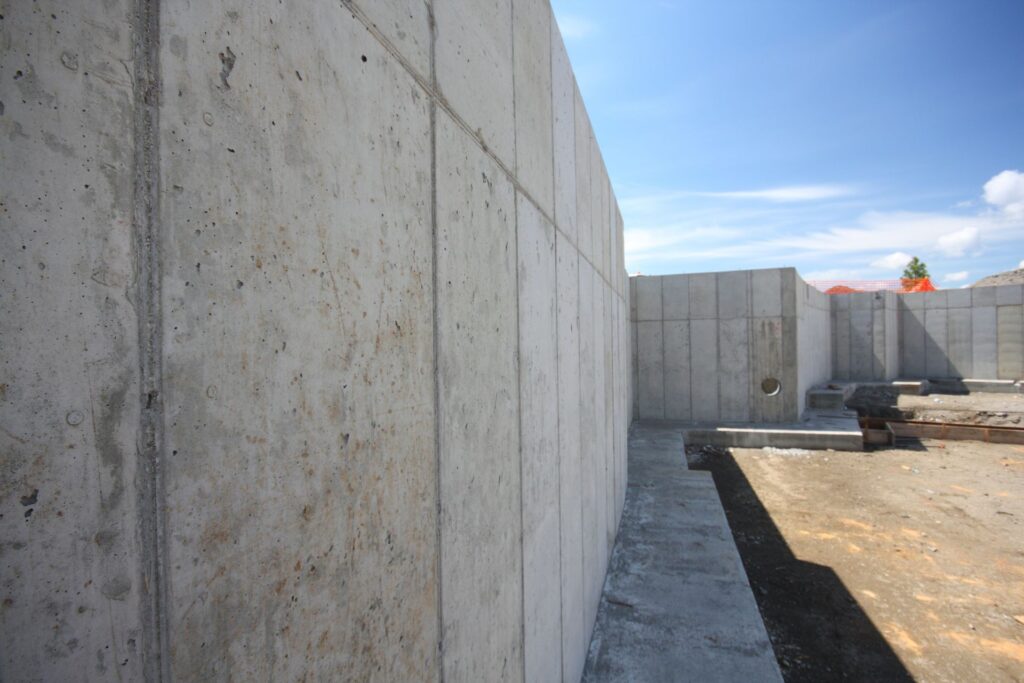
Design Principles For Timber Retaining Walls
Designing timber retaining walls involves a blend of structural integrity, aesthetic harmony, and effective drainage solutions. This guide explores the key design principles to consider when planning a timber retaining wall, particularly focusing on New Zealand landscapes. Whether you’re a homeowner looking to enhance your property or a professional landscaper, understanding these principles is crucial for creating not only a functional but also a visually appealing retaining wall.
Basic Design Considerations
When it comes to the construction of timber retaining walls, the basic design considerations revolve around three main factors: height, length, and depth. These elements are fundamental to the stability and durability of the wall.
Height: The height of a retaining wall determines the amount of earth it needs to hold back. It’s essential to calculate the right height to ensure that the wall can withstand the pressure. Taller walls require additional reinforcement and may need the input of a structural engineer.
Length: The length of the wall plays a crucial role in its design and functionality. Longer walls might need to incorporate curves or zigzags to enhance stability and add aesthetic value.
Depth: The depth of the foundation is critical for the overall stability of the retaining wall. A deeper foundation provides a better anchor, which helps in distributing the pressure evenly and preventing the wall from tipping forward.
Aesthetic Considerations for NZ Landscapes
New Zealand’s landscapes are renowned for their natural beauty, ranging from lush greenery to rugged terrains. When designing timber retaining walls, it’s essential to consider how they will complement the surrounding environment and residential architecture. Here are some tips:
Material Selection: Choose timber that not only suits the strength requirements but also blends well with the natural and architectural surroundings. Native woods or those treated to mimic the local flora can create a cohesive look.
Design Integration: Consider the overall landscape design when planning your wall. A retaining wall should enhance the natural flow of the land rather than interrupt it. Incorporating native plants and materials can help achieve this integration.
Customization: Tailor the design to fit the specific characteristics of the site and your personal aesthetic preferences. Whether it’s a straight, clean line for a modern look or a more organic shape that mimics natural contours, customization can significantly impact the overall appeal.
Incorporating Drainage Solutions
Effective drainage is paramount in ensuring the longevity and integrity of timber retaining walls. Moisture accumulation behind the wall can lead to wood rot and structural failure. Here are some strategies to integrate effective drainage:
Weep Holes: Small openings at the base of the wall allow trapped water to escape, preventing pressure build-up behind the wall.
Drainage Materials: Using gravel or crushed stone behind the wall can enhance drainage by allowing water to filter down and away from the wall.
Proper Sloping: Ensure that the land above the wall slopes away from it, directing water runoff away from the wall’s structure.
In conclusion, designing timber retaining walls is a delicate balance between structural needs, aesthetic preferences, and effective drainage solutions. By taking into account the height, length, and depth of the wall, considering the unique beauty of New Zealand’s landscapes, and incorporating efficient drainage practices, you can create a retaining wall that is both functional and visually appealing. This approach not only enhances the value and beauty of your property but also ensures the longevity and stability of your timber retaining wall.

Step-By-Step Guide To Building A Timber Retaining Wall
Building a timber retaining wall is not just a fantastic way to enhance the aesthetic appeal of your garden or outdoor space; it’s also a practical solution for controlling soil erosion, creating usable flat areas on sloping ground, and adding value to your property. Whether you’re a seasoned DIY enthusiast or a beginner looking to embark on a new project, our comprehensive guide walks you through the entire process, from preparation to the finishing touches. Let’s dive into the step-by-step process of building a timber retaining wall.
Preparation and Materials Needed
Before you begin, it’s crucial to gather all the necessary tools, materials, and safety equipment. Ensuring you have everything on hand will streamline the process and help avoid unnecessary interruptions.
Tools and Materials:
- Timber (pressure-treated for outdoor use)
- Gravel (for drainage behind the wall)
- Drainage pipe
- Landscape fabric
- Rebar or heavy-duty spikes
- Hammer or mallet
- Shovel
- Level
- Tape measure
- Circular saw or handsaw
Safety Equipment:
- Gloves
- Safety goggles
- Dust mask (especially if cutting wood)
Preparation also involves planning the layout of your retaining wall, considering the height, length, and location. Check local building codes and regulations, as a permit may be required for walls above a certain height.
Construction Process
Step 1: Marking the Area
Using stakes and string, mark the ground where your timber retaining wall will be built. This visual guide will serve as your blueprint throughout the construction process.
Step 2: Excavating the Foundation
Dig a trench along the marked area, approximately 6 inches deep and 12 inches wider than the timber’s width. This foundation trench is crucial for the stability of the wall.
Step 3: Laying the Foundation
Fill the trench with about 3 inches of gravel and compact it thoroughly. This layer aids in drainage and provides a solid foundation for the timber.
Step 4: Building the Base Layer
Lay the first row of timber in the trench. Ensure each piece is level, both individually and as part of the row. Secure the timber to the ground using rebar or spikes, driving them through the timber into the ground.
Step 5: Adding Additional Layers
Stack additional layers of timber, ensuring each layer is staggered for stability. Use spikes to secure each layer to one.
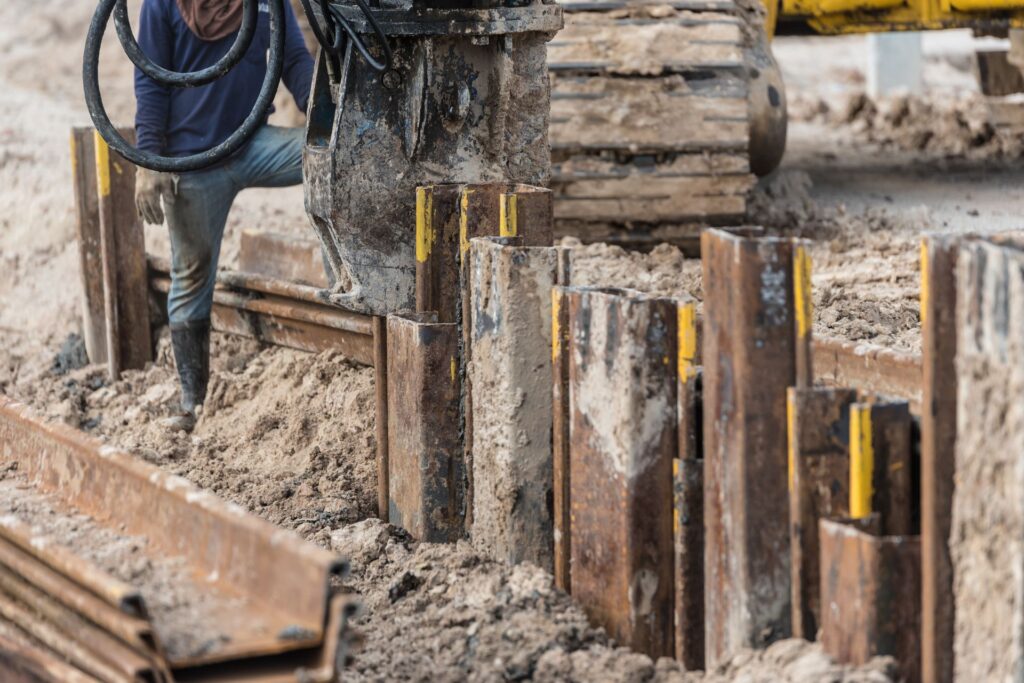
Maintenance And Care
Ensuring the longevity and stability of your timber retaining walls involves a blend of regular maintenance, timely inspections, and addressing common issues before they escalate. Timber, as a natural and aesthetically pleasing material, requires specific care, particularly in New Zealand’s unique environmental conditions. In this section, we’ll delve into practical tips for maintaining your timber retaining walls, alongside solutions for common problems such as rot, pest infestations, and water damage.
Regular Inspection and Maintenance Tips
Timber retaining walls are not just functional; they add a natural charm to your landscape. To keep them in prime condition, a proactive approach to maintenance is key. Here’s how you can ensure your timber walls stand the test of time:
Bi-annual Inspections: Conduct inspections at least twice a year. Look for signs of wear and tear, such as cracks, leaning sections, or wood degradation. Early spring and late autumn are ideal times, preparing the wall for the wet and dry seasons respectively.
Proper Drainage: Water is the biggest adversary of timber structures. Ensure that your retaining wall has adequate drainage to prevent water accumulation. This might involve checking and cleaning weep holes or installing additional drainage solutions like French drains.
Wood Treatment and Protection: Apply wood preservative treatments to protect against rot and pests. Consider using treatments that are environmentally friendly and suitable for your specific timber type.
Vegetation Control: Keep the area around the wall clear of dense vegetation. Overgrown plants can retain moisture and obscure parts of the wall during inspections.
Immediate Repairs: If you notice any damage, address it promptly to prevent further deterioration. Small fixes now can prevent costly repairs later.
Dealing with Common Issues
Even with diligent care, timber retaining walls can encounter problems. Here’s how to address the most common issues:
Rot: Timber rot is a common issue, particularly in damp conditions. If you find rotten wood, replace the affected sections immediately. Use treated wood that’s resistant to decay and ensure good drainage around the new sections.
Pest Infestation: Termites and other wood-loving pests can cause significant damage. Regularly inspect for signs of infestation, such as mud tubes or hollowed-out wood. Consult a pest control professional for treatment options that are effective yet safe for the surrounding environment.
Water Damage: Water can erode the soil behind the wall or cause the timber to swell and contract, leading to structural issues. Ensure your wall has efficient drainage and consider installing waterproofing barriers if necessary.
Timber retaining walls are a beautiful and functional addition to any landscape, but they require regular care to maintain their integrity and aesthetic appeal. By following these maintenance and care tips, including regular inspections and prompt action on common issues, you can significantly extend the life of your timber retaining walls, especially in the challenging New Zealand climate. Remember, a little effort goes a long way in preserving the natural beauty and functionality of your outdoor spaces.

Inspirational Ideas And Examples
In the world of landscaping and outdoor design, timber retaining walls have stood the test of time, proving not only their utility but also their versatility in enhancing the aesthetics of any outdoor space. In this section, we dive deep into the realm of inspirational ideas and examples, particularly focusing on the ingenious uses and creative designs of timber retaining walls. From the lush landscapes of New Zealand to the inventive approaches in settings worldwide, let’s explore how these structures can transform an area, providing both functional benefits and visual appeal.
Case Studies from NZ: A Beacon of Success
New Zealand, known for its breathtaking natural beauty and diverse landscapes, serves as the perfect backdrop for showcasing the effectiveness and elegance of timber retaining walls. Through detailed case studies from various regions of NZ, we aim to inspire and educate our readers on the possibilities that timber retaining walls can bring to their own projects.
These case studies highlight the successful implementation of timber retaining walls in overcoming landscaping challenges such as slope stabilization, soil erosion control, and making steep terrains usable. Moreover, they celebrate the aesthetic transformation that these walls bring to gardens, parks, and residential properties. Each example is carefully chosen to reflect the unique attributes of timber as a material its natural appearance, durability, and the warmth it adds to any setting.
Creative Uses and Designs: Beyond the Ordinary
Moving beyond the conventional applications, this section is dedicated to unveiling the creative potential of timber retaining walls. It’s here that innovation meets functionality, showcasing examples where timber retaining walls serve not just a practical purpose, but also as a focal point of creative expression.
Discover how architects, landscapers, and homeowners have pushed the boundaries, using timber retaining walls in unconventional ways. From integrating seating options, and creating tiered garden beds, to incorporating lighting for dramatic nighttime effects, the versatility of timber allows for endless possibilities. These examples not only serve as a testament to the material’s flexibility but also inspire readers to think outside the box when incorporating timber retaining walls into their own spaces.
By presenting a wide range of applications and designs, we hope to spark creativity and encourage our readers to envision timber retaining walls not just as a structural necessity but as an opportunity to enhance the beauty and functionality of their outdoor environments. Whether you’re a professional landscaper or a DIY enthusiast, let these ideas guide you in creating spaces that are both beautiful and sustainable.
Through the exploration of case studies from New Zealand and the examination of creative uses and designs, this section aims to provide a comprehensive source of inspiration for anyone looking to incorporate timber retaining walls into their landscape design. The versatility and natural appeal of timber make it an excellent choice for a wide range of applications, from practical solutions for challenging terrains to creative expressions in garden design. We invite you to draw inspiration from these ideas and examples to create functional, beautiful spaces that stand the test of time.
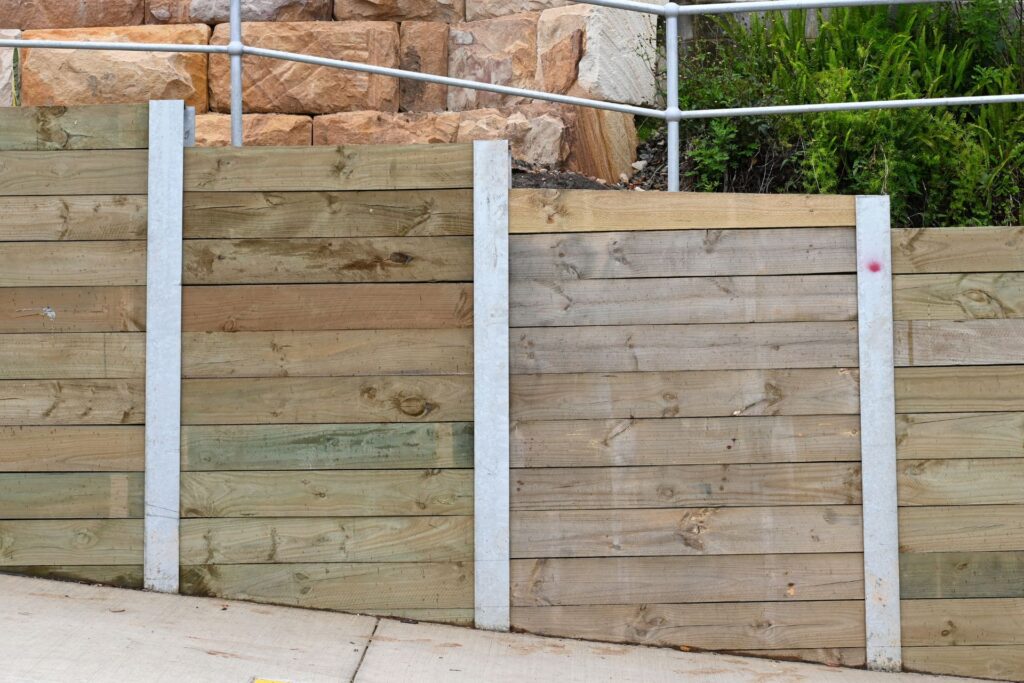
FAQs: About Timber Retaining Wall Design In NZ
Conclusion
As we reflect on the essentials of designing and constructing timber retaining walls in New Zealand, it’s crucial to underline the importance of selecting durable materials suited to the local climate, thorough planning, and adherence to regulations for a structure that complements New Zealand’s unique landscape. This guide aims to arm you with the knowledge to confidently approach your project, emphasizing preparation, environmental respect, and meticulous planning.
The journey to erecting a lasting and beautiful timber retaining wall, while navigating the challenges and opportunities presented by New Zealand’s diverse environment, is one of careful consideration and enthusiasm. Remember, the success of your retaining wall is grounded in understanding your land and planning meticulously. We encourage you to move forward with your project, equipped with the insights shared, and to seek expert advice when needed, ensuring your timber retaining wall is not only a testament to your hard work but also a harmonious addition to New Zealand’s natural beauty.
Find A Professional Retaining Wall Designer Near You!
- Retaining Wall Builders Hastings
- Retaining Wall Builders Hawkes Bay
- Retaining Wall Builders Kapiti
- Retaining Wall Builders Levin
- Retaining Wall Builders Lower Hutt
- Retaining Wall Builders Napier
- Retaining Wall Builders Palmerston North
- Retaining Wall Builders Porirua
- Retaining Wall Builders Upper Hutt
- Retaining Wall Builders Wellington
- Retaining Wall Installation Manawatu
- Retaining Walls Nelson
- Retaining Walls Tauranga
- Retaining Wall Builders Auckland
- Retaining Wall Builders Hamilton
- Retaining Wall Builders Tauranga
- Retaining Walls Christchurch
- Retaining Walls Rotorua
About the Author:
Mike Veail is a recognized digital marketing expert with over 6 years of experience in helping tradespeople and small businesses thrive online. A former quantity surveyor, Mike combines deep industry knowledge with hands-on expertise in SEO and Google Ads. His marketing strategies are tailored to the specific needs of the trades sector, helping businesses increase visibility and generate more leads through proven, ethical methods.
Mike has successfully partnered with numerous companies, establishing a track record of delivering measurable results. His work has been featured across various platforms that showcase his expertise in lead generation and online marketing for the trades sector.
Learn more about Mike's experience and services at https://theleadguy.online or follow him on social media:

